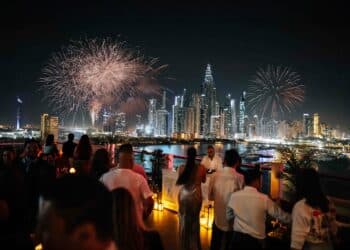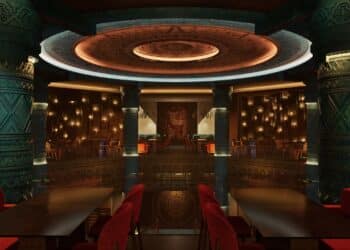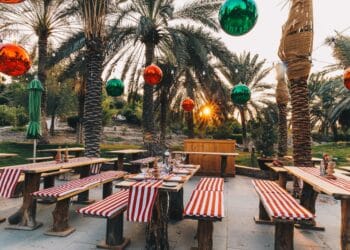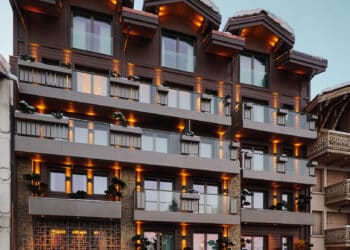One of a string of Peruvian restaurants to open in Dubai International Financial Centre this year, Totora Cebicheria Peruana promises to compete with a truly authentic taste of Peru. Crystal Chesters reports

With European, Asian and African flavours weaved together and underpinned by indigenous traditions, it’s no wonder Peruvian food has exploded in Dubai, which itself is a melting pot of cultures. While the trend first spread throughout the US and London, it took a little longer to reach the shores of the Gulf. However, today there are some very strong players on the market, including The Act at Shangri-La Dubai, Coya at Four Seasons Dubai at Jumeirah Beach restaurant village, and Taj Dubai’s Tesoro, among others.
And now the trend is making its way beyond five-star hotels, establishing itself in independent restaurants, most notably in Dubai International Financial Centre (DIFC), which this year has become a hotbed for
Peruvian cuisine. Three have opened in 2016 alone ̶ Ceviche, Mayta by Jaime Pesaque, and the latest addition, Totora Cebicheria Peruana, named after the indigenous Peruvian plant.
Behind Totora is Rania Al Khalifa, a member of the Bahraini royal family and Lebanese investor Ali Sidani, who last year opened casual dining outlet Pollo Pollo in the Umm Suqeim area, marking Dubai’s first Peruvian pollería (chicken rotisserie). However, for Al Khalifa, Totora is her debut F&B investment, so she felt the need to work with a strong partner who could offer the best know-how from an operational perspective, which is why Ròya International was brought on board.
“Not only is our executive chef Peruvian, but he’s complemented by a whole back-of-house and kitchen team that are Peruvian so I think as our operations director would say: ‘that’s 10 more than the next guy!’” – Rania Al Khalifa
“I think it goes without saying that Ròya International has a broad experience in Dubai and the international hospitality sector, so we’re very lucky and privileged to have them as our partner,” she says.
And while the timing of the opening makes it seem like the investors are jumping on an already-established trend, they had in fact been mulling the idea of bringing a Peruvian concept to Dubai before it became so popular. “We started thinking of this two years ago so it’s been a bit of a journey, but now there are so many Peruvian concepts coming in,” says Khalifa.
Sidani, a software engineer by profession, comments: “Food was always my passion and when I married my Peruvian wife I started learning more about the cuisine and culture and thought this would be very interesting to bring to the UAE.”
Meanwhile, Al Khalifa’s F&B experience comes from her time working on New York’s Wall Street. As a research analyst at Credit Suisse, she dealt with food businesses and later moved over to the asset management side as an analyst covering food investment. When the global financial downturn hit, she decided to return to the Middle East where she met with Sidani and realised they had the same aspiration – to create a truly authentic Peruvian concept for Dubai. And despite the competition today, Al Khalifa is confident there is still space on the market for such a diverse cuisine.

“We’re really passionate about Peruvian cuisine and we think it’s relatively unexplored for the breadth of its offer. Everyone knows Thai, everyone knows Vietnamese but Peruvian has got so much more in terms of its cuisine than some of the others, and people don’t really know about it,” she says.
Ahmed Ramdan, founder and CEO of Ròya International agrees, but admits the competitiveness of the Dubai market does make Totora a bold venture.
“It’s a challenge but I think we’re willing to go through it,” he says. “Generally, Dubai is becoming a more mature market for restaurants. Before it was New York and London, but Dubai has joined that market. Once the city matures in hospitality then it’s time for you to bring all types of restaurants and there’s a market for everyone. Is it sustainable? That depends: I guess if it’s a very trendy restaurant, the life-expectancy is much shorter.”
But Totora isn’t looking to be the latest flash-in-the-pan hotspot. An all-Peruvian back-of-house team is on board, headed up by chef Alex Barrera, who first met Sidani in Peru while working for Lima restaurant chain, La Bomboniere, and last year opened Sidani’s Pollo Pollo in Dubai.
Likewise, ingredients are to be sourced directly from Peru, which the team believes is essential for creating authenticity.
Sidani explains: “We knew this wave of Peruvian was coming but what differentiates us is that many of our core ingredients are brought straight from Peru and we utilise these as our base items. That makes us way more authentic that what exists here.”
“Once the city matures in hospitality then it’s time for you to bring all types of restaurants and there’s a market for everyone. Is it sustainable? That depends: I guess if it’s a very trendy restaurant, the life-expectancy is much shorter” – Ahmed Ramdan
Al Khalifa chimes in: “Not only is our executive chef Peruvian, but he’s complemented by a whole back-of-house and kitchen team that are Peruvian so I think as our operations director would say: ‘that’s 10 more than the next guy!’
“Some of the chefs have worked on the chifa type of cuisine, which is the Chinese-influenced Peruvian food, whereas others are experts in the cold station, making tiraditos and ceviche – they all have a value-add in terms of where they’ve worked and what segment of cuisine they bring,” says Al Khalifa.

Having spent time in Peru, Sidani and Al Khalifa want to showcase the heritage, depth and complexity of the cuisine. Al Khalifa asserts that it is more accessible that people think and doesn’t have to be toned down or altered for the Middle East.
“When you start to taste it you realise the fried rice resembles Chinese, the raw fish resembles sashimi from Japanese cuisine, and the arroz marisco is like paella, so it’s far more approachable than most people realise. Most people haven’t even tried it – they only know ceviche and quinoa but there’s so much more we’re excited to teach and showcase to the Dubai community,” she says.
Ramdan agrees that so far, the Dubai market has mostly sampled a fusion take on Peruvian cuisine in the existing outlets, and Totora will address this gap in the market.
“There are similar restaurants in Dubai but usually only a small part of them is really Peruvian, and they are really more European or fusion. Ali and Rania are trying to make Totora very authentic so that’s what will differentiate it,” he explains.
The 6,000ft2 venue is open seven days a week, serving food between noon and midnight, Saturday through Wednesday and until 1am on weekends. It will seat 88 people in the ground floor restaurant area, including four seats around a cevicheria bar, while downstairs in the lounge area, there are 96 seats. Ramdan explains that the decision to make the space a restaurant-meets-bar-and lounge, a set-up being seen in many new Dubai F&B outlets, was commercially-driven.

“We would like to capture pre-dinner and post-dinner customers rather than simply having dinner from 9-11.30pm. Primarily it was a commercial decision, but secondly it was to complement the environment and allow for diverse audiences to enjoy it.”
Designed by Lebanese architect, Fadi Sarieddine, the space features two floors, and the focal point of the entrance is a rope bridge, reminiscent of the last remaining Incan rope bridge in Peru. The concept evokes a physical journey through the landscape of Peru with a caballito de totora ̶ a traditional Peruvian fishing vessel ̶ the statement piece.
Located opposite Boca, in the space that used to house the Andrew Martin store, the team admits that the conversion of the shop space into a restaurant hasn’t come without its challenges. Ramdan is used to these of course, having opened five concepts already in DIFC, however for Al Khalifa and Sidani, the frustrations are less familiar.
“Construction is always a challenge: planning permits and trying to get contractors to meet your deadlines, and the element of surprise when the space you lease isn’t built to be a restaurant. Eventually once we open, licenses will be the last hurdle,” explains Ramdan.
With an opening date first agreed for March and then pushed to the end of May, the team are anxious to get started, and Khalifa says that within 12 months’ time she would like to see the restaurant matching ̶ or hopefully exceeding ̶ expectations.
“We are really very passionate and very driven in what we seek to achieve and we really want to create the best in terms of experience, the quality of food, and everything from the staff interaction to the music, atmosphere and value,” Al Khalifa comments.
“We want the full package and we hope to achieve that and more, and maybe win a couple of awards on the way.”


































































